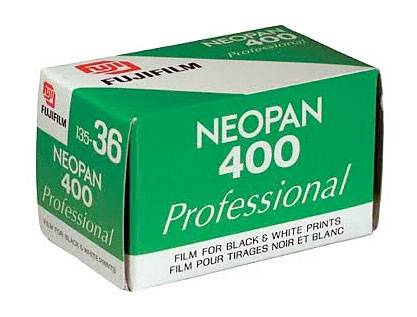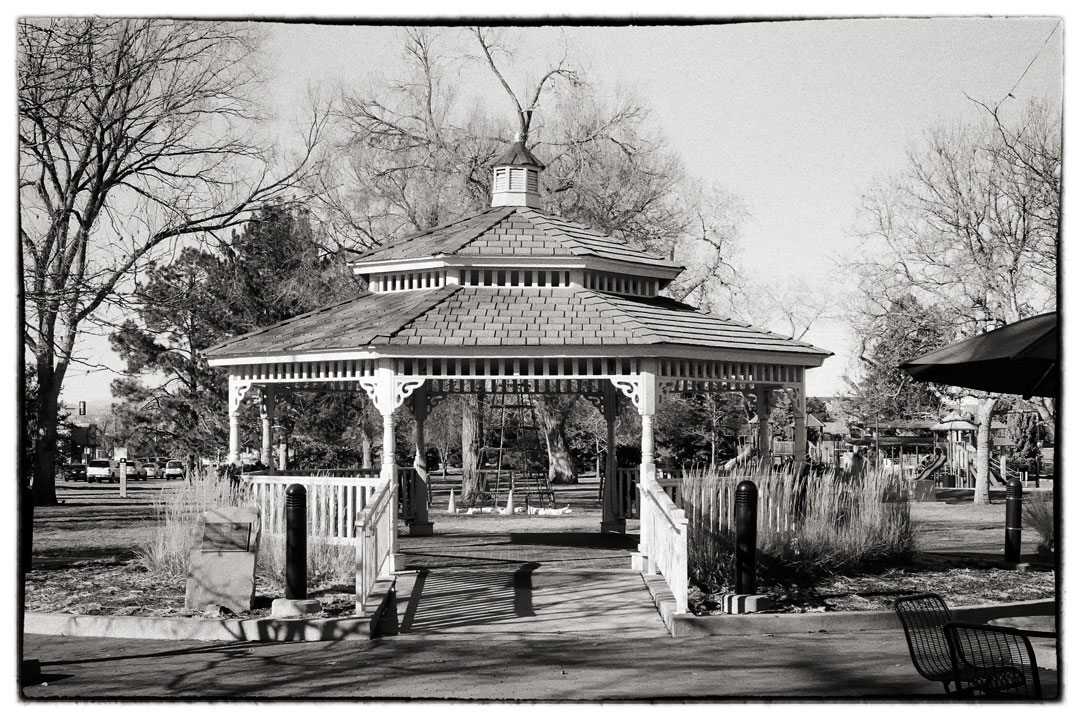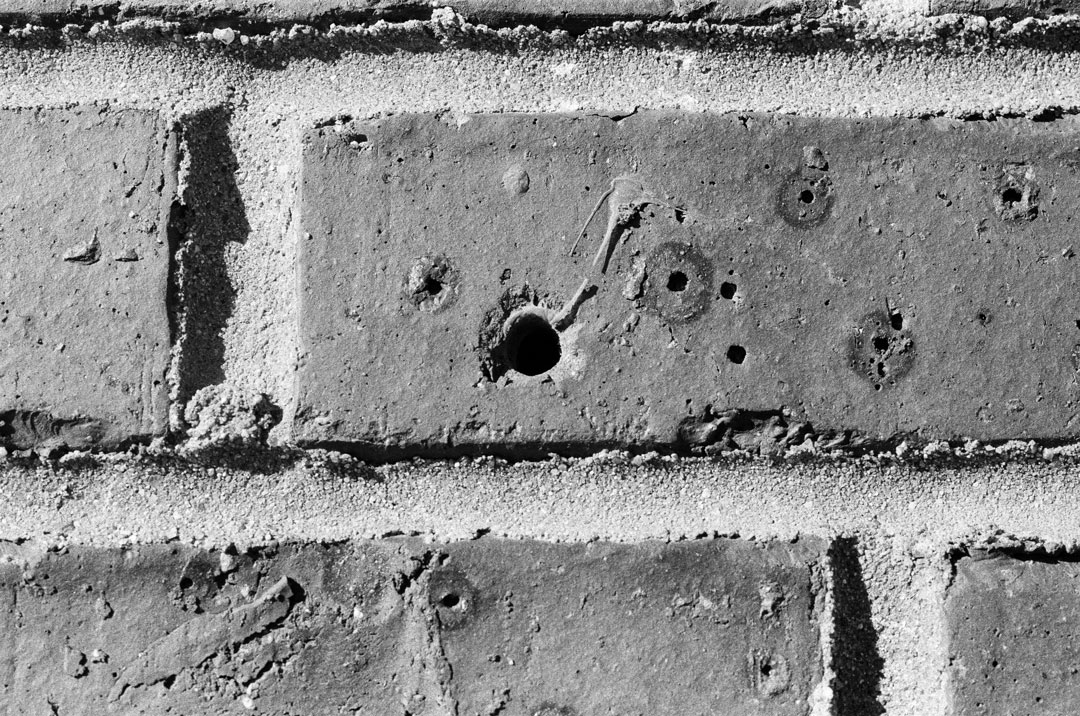Today’s Post by Joe Farace
“I like the film camera better because the film is still one hundred times better than any digital image at the moment. So, there are certain movies that you can’t really do digitally.”— Vilmos Zsigmond, cinematographer for Close Encounters of a Third Kind.
 Neopan 400 Professional aka ‘Presto’ in Japan was a high-speed, black and white negative film with an (obvious) ISO speed of 400 and was originally aimed at sports and documentary photography. Yet many photographers outside these genres also embraced the film. It was produced for 35mm, medium format and 4×5 cameras but was sadly discontinued in 2013, which was when I purchased the roll that I shot.
Neopan 400 Professional aka ‘Presto’ in Japan was a high-speed, black and white negative film with an (obvious) ISO speed of 400 and was originally aimed at sports and documentary photography. Yet many photographers outside these genres also embraced the film. It was produced for 35mm, medium format and 4×5 cameras but was sadly discontinued in 2013, which was when I purchased the roll that I shot.
Neopan 400 incorporated fine silver halide particles while, at the same time, light absorption efficiency was also increased. Fuji claimed the film offered “extraordinary sharpness, fine grain, and wide exposure latitude”. Neopan 400 was also said to be resistant to static marks and offered push processing capability to EI 1600.
The film was supposed to, “despite its high speed, yield quality prints.” I didn’t make any prints; the images you see here were from 2048 x 3072 scans that were made at the time of processing by The Darkroom. The lab also makes Super (4492 x 6774) scans that cost five bucks more than the enhanced scans. I’ll have to give this latter option a try sometime in the future. As has been my experience with The Darkroom, the scans looked pretty good and the negatives were well processed, clean and scratch/streak free. Thanks Mike for a job well done.
 But while my erstwhile colleagues and Internet pundits rhapsodize over Neopan 400 Professional my own take is more subdued: It has a wide tonal range and produced really nice blacks but was bit too grainy for my taste, so I’ll stick with my (expired) Acros 100 for now. To be fair, the film’s age may have causes the increased grain but you can’t buy any newer stock to compare it to. Acros is just ISO 100 and photographers that are new-to-film-from-digital are used to shooting higher ISO’s with impunity, I still prefer less grain but that’s just me.
But while my erstwhile colleagues and Internet pundits rhapsodize over Neopan 400 Professional my own take is more subdued: It has a wide tonal range and produced really nice blacks but was bit too grainy for my taste, so I’ll stick with my (expired) Acros 100 for now. To be fair, the film’s age may have causes the increased grain but you can’t buy any newer stock to compare it to. Acros is just ISO 100 and photographers that are new-to-film-from-digital are used to shooting higher ISO’s with impunity, I still prefer less grain but that’s just me.
As far as sharpness is concerned: It was a sunny day but chilly day during my photo walk, and the FD 50mm f/3.5 macro lens attached to the Canon A-1 proved to be pretty sharp. I even made one of my brick wall—but close-up—tests: These test frames were sharp edge-to-edge and there was no vignetting or distortion when shooting near the typical lens’s f/8 sweet spot. The sweet spot is the aperture at which a lens produces maximum sharpness. In general, a sweet spot will be between two to three stops down from the lens’ maximum aperture. (You can see one of the SOOC images at below right.) I agree with those who say this second generation of lenses that have a 52mm filter size and black non-breech lock mount are really sharp. I plan to do some winter flower photography tests with this lens and a Canon 25mm extension tube on this winter’s snowy days.
 Oh, I haven’t said anything about the Canon A-1. OK, I love this camera more than my other A-series Canon SLRs. It has some peculiarities but it’s these eccentricities that endear me to it. And build quality? It’s almost as if the same tech bug that’s infected German car manufacturers (especially) causing them to move away from using high quality construction standards with high quality materials to having cheaper and plastic build quality while loading the cars up with techno gadgets that will be broken or out-of-date as soon as the car leaves the warranty period. I think this 38-year SLR is better made than a $5999 Canon R3 full-frame mirrorless camera. To be fair, let’s compare what the cost of the camera was back in 1983 when the NYC camera stores actually gave you discount: The 1983 Canon A-1 body would cost $1,124.68 in today’s dollars .
Oh, I haven’t said anything about the Canon A-1. OK, I love this camera more than my other A-series Canon SLRs. It has some peculiarities but it’s these eccentricities that endear me to it. And build quality? It’s almost as if the same tech bug that’s infected German car manufacturers (especially) causing them to move away from using high quality construction standards with high quality materials to having cheaper and plastic build quality while loading the cars up with techno gadgets that will be broken or out-of-date as soon as the car leaves the warranty period. I think this 38-year SLR is better made than a $5999 Canon R3 full-frame mirrorless camera. To be fair, let’s compare what the cost of the camera was back in 1983 when the NYC camera stores actually gave you discount: The 1983 Canon A-1 body would cost $1,124.68 in today’s dollars .
But that’s just my opinion, I may be wrong.
If you enjoyed today’s post and would like to support this blog so I can to increase the amount of film photography coverage, please consider making a monthly contribution via Patreon. Memberships start at just $1.25 a month, with other levels of $2.50 and $5 that include special benefits. If subscriptions are not for you, that same linked page lets you to make a one-time contribution. I also recognize the pandemic has had an adverse effect on many people’s incomes, so if you would prefer to just send some good thoughts my way, that’s appreciated too.